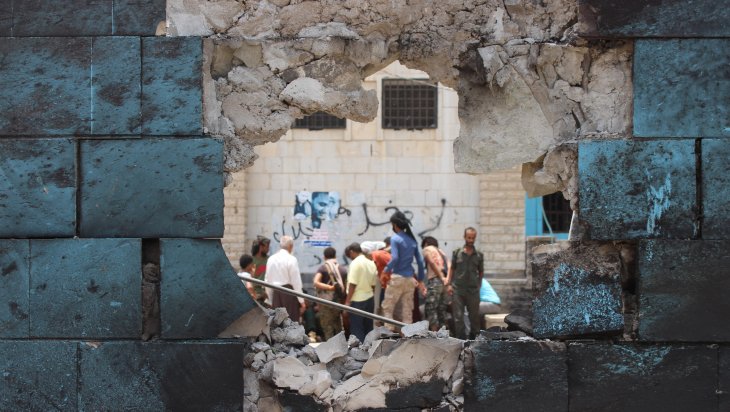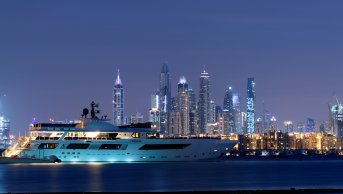Saudi-led coalition continues to struggle in Yemen

Despite the unification in 1990 under the Saleh presidency, the Yemeni people in the Northern and Southern governorates have gone through different trajectories since the tensions escalated to a full-scale and multifaceted civil war in 2015. With the Houthis’ seizure of the capital Sana’a in 2014 and of the port city of Hodeidah and the surrounding governorates and cities, the battle in the Northern governorates has been fought primarily between the Houthis and the Hadi government backed up by the Saudi-led coalition. On the other hand, the battle in the Southern governorates has turned out to be a more complex struggle, featuring the UAE-backed militias, the Hadi Government, the Southern Transitional Council (STC) with its armed wing the Security Belt Forces (SBF), the Islah Party, which is an offshoot of Muslim Brotherhood in Yemen, as well as the terrorist organizations like DAESH and Al-Qaeda in the Arabian Peninsula (AQAP).
In the last few days, the STC has taken possession of certain strategic positions in Aden. That led to an overall consideration in regard to who controls what in Yemen. Portraying the war as the Houthi resistance to the government would be utterly ineffective in comprehending what lays ahead. It is hardly a “resistance” when a rebel group keeps control of the capital for 4.5 years. Even though nothing is crystal clear at the moment, it needs to be acknowledged that the nature of the civil war is changing. It is changing at the expense of the Saudi-led coalition. Unfortunately, by the way, it is taking a turn for the worse for the people of Yemen. Labeled as a civil war between the Hadi Government and a rebel group -the Houthis-, the 4.5 years of intense confrontations have recently become more deadly than they ever were before.
Drawdown security vacuum filled immediately in Aden
Announced in early June, the UAE drawdown created an inconsistent loophole particularly in the southern Yemen where the UAE-aligned separatists -the STC- and its armed wing -the SBF- continue to fight against the Hadi government as well as against the Houthis. Lately, amid mounting clashes between the various warring parties in southern Yemen, terrorist organizations and their local affiliations and armed offshoots such as the AQAP and DAESH have also carried out terrorist attacks which prevented analysts from completely ignoring their occupation in the war.
On August 1st, the Houthi attack on SBF’s military parade in al-Jalaa military facility in Buraiqa, Aden, left over 51 dead. Through Al-Masirah tv, the Houthis claimed that they have launched a medium-range ballistic missile and an armed drone to carry out the attack. The STC notables blamed the Islah, saying that the Islah is complicit in this attack. After the UAE drawdown, the STC craves more authority in the southern governorates, seeing itself as the true heir of the South Yemen and also feels disgruntled after being left out of the Stockholm Agreement in December 2018. Although STC has acquired government military bases in Aden in early August, recent developments have demonstrated there could a possibility that democratic processes could be put in process after the military solution.
On August 2nd, in a police station in Aden, 11 police officers were killed by an attack and responsibility was claimed by DAESH. On the same day, Al-Qaeda affiliated terrorists killed 20 militias from a unit of the SBF in a military camp in Abyan governorate, which shares a border line with Aden through its west.
That attacks have shown that in southern Yemen, as the number of armed actors increases, so does the number of agendas. The UAE officials had claimed that the resting UAE military presence and assistance in Yemen would be channelled to fighting the terrorist organizations. But it is claimed by many international organization that the UAE is partially working with these groups. A report by International Amnesty revealed a link between the UAE-backed forces and the Al-Qaeda affiliated groups with regard to a secret arms sales.
Even after drawdown, developments in the war continue to haunt the UAE. From the perspective of a rational analysis, if the south provinces of Saudi Arabia could be targeted by the Houthis, as they have been dozens of times recently, there is no guarantee that one day Dubai and Abu Dhabi would be targeted by the Houthis. That would be the real consequence for the UAE’s 4.5 years long disastrous agenda in Yemen. That would, of course, exacerbate the existing royal rivalry among the Emirates. As the reports have been coming in, it has been rumoured that Dubai ruler Mohammed bin Rashid al-Maktum distraught with his wife -Princess Haya’s- eventful escape from Dubai, began to openly criticize Abu Dhabi’s policy choices in the war zones such as Yemen and Libya.
Despite channeling vast resources to their war-machine in Yemen, the Saudi-Emirati efforts towards eradicating the Houthi threat from Yemen proved ineffective as the latest developments in Aden indicated. Whatever the real reason behind it, it is clear that the UAE no longer considers pursuing a policy of “boots on the ground”. As the officials claimed, the UAE opted for a “peace-first-strategy”. Along with the political reasons, the economic costs of fighting in Yemen must have been another reason for the drawdown.
After the UAE officials announced that they are reducing the number of troops and withdrew some of them completely, the areas previously under control of the UAE were supposed to be handed over to the UAE-aligned and trained local militias. Bragging about the number of local militias that they “trained and equipped” reached almost 90,000; some of the UAE officials had gone so far as to claim that the job in Yemen is done. Nevertheless, the latest attacks carried out by the Houthis, the AQAP and DAESH and the disputes between the Islah and the STC -the cracks in the anti-Houthi alliance- demonstrate that the UAE drawdown created a gap that could be possibly filled by a democratic transition in the region. However, that does not mean a democratic transition would happen easily.
Cracks in the Saudi-Emirati axis
After the UAE drawdown, Iran and the UAE have agreed to strengthen their cooperation on maritime security. Although the officials stated that in deciding the drawdown Saudi Arabia was consulted, however, it seems the coalition and its very core has started to crack. Regarding the maritime talks between Iran and the UAE -the first talks after 2013- many media outlets argued that it is the beginning of the end of the coalition. In responding to these allegations, the Saudi-Emirati media has claimed that the drawdown issue and recent maritime talks were politicized by Iran and Qatar in order to sow discord between Saudi Arabia and the UAE. The real reason for the cracks in the Saudi-Emarati axis could be the existence of different prioritizations. It has been rumoured many times that the UAE wants to contain Iran, not in the south of Saudi Arabia but in the Gulf and Hormuz itself, where the promixity the UAE soil matters more for its national interest. Now there is even talk of a Saudi-Emirati confrontation in southern Yemen over the alleged “Aden coup”.
In this background, Saudi Arabia has an intention to lead this critical process via offering a negotiation talk to be held over the issues in south. Initially after the Aden coup, Hadi government stipulated that they will not participate this negotiation, unless the UAE-backed southern separatist forces completely withdrawn from their holdings. The STC representatives gave green light to this negotiation talks. With many people coming from southern governorates of Yemen to Aden for the protests that have been occurring in most of August, the STC seems determined not to abandon their military holdings. Later in August, Hadi government has shown a flexibility regarding their condition to attend the talks. The altered condition is that all the parties need to comply with the Saudi-led coalition’s call for the commitment to the negotiation.
Any condition in Yemen seems to be bound up with another condition. While the Hadi government requests that the STC needs to abandon their holdings, the STC on the other hand, stipulates that unless the northerners and the Islah are not removed from Aden, they will not leave their holdings.
It seems that the cracking alliance between Saudi Arabia and the UAE remains stuck on the way to political solution in Yemen. Now that most of the UAE troops seem to have gone, it is difficult for the Saudis to sit around at the negotiation table. Given that initial dialogues require a certain degree of trust among warring parties, it can be said that comprehensive negotiations seem a distant possibility due to lack of trust. Moreover, with Mohammed bin Selman’s attitude, it is not highly likely that Saudi Arabia will recognize the STC, let alone the Houthis. An improptu offer of negotiation would of course signal that Saudi Arabia was depending too much on the Emarati boots on the ground. Therefore, it is more likely that we can even expect a similar “Saudi withdrawal” soon. Probably, the Saudi withdrawal is not going to be as silent as the UAE has done and will not be less consequential. Finally, if Saudi Arabia has still any intention to “win” the war in Yemen, it needs to find a way other than air strikes on civilians, and it needs to find a functioning way that does not rely upon the Emirati boots on the ground.









